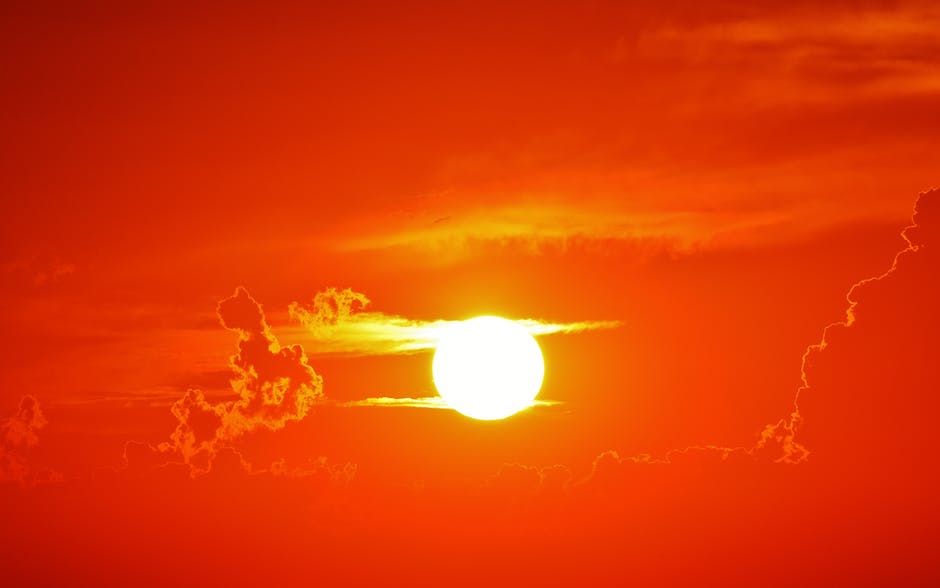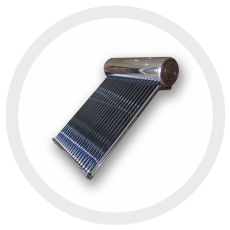Overheat Protection
Passive solar water heaters and the Sunbank, in particular, are able to achieve water temperatures of 100C or 212F. In other words, they can boil water on your roof with only the power of the sun. As impressive as that fact may be, it also presents a challenge: how to protect yourself and your water heating system from too much heat and pressure. In this post we will go over how the Sunbank does that and what your options are during installation.
The first point to mention here is that all residential installations should include a tempering valve, also referred to as a thermostatic mixing valve. This is a mechanical device that is installed downstream of your solar water heater. It is a spring

loaded device that automatically mixes water down to a set temperature. It does this by bringing together the solar water feed with a cold line. As the water in the solar line passing through is hotter it restricts that line further and therefore mixes in more cold water. This all happens automatically.
There are two main types and temperature ranges of thermostatic mixing valves. The types are mixing valves for closed loop hydronic heating systems which contain lead and mixing valves for domestic water heating systems which do not contain lead. They are typically made with ranges of 80F – 120F and 120F – 160F. Most people reading this will want a lead free mixing valve with 80F -120F range. 110F is a comfortable shower for most people. Those who have a long pipe run between their shower and water heater or those who like especially hot shower can open this valve all the way to get 120F hot water at the tap.
You’re protected. What about your water heating system?
All of the components of your water heating system, like your piping and your conventional water heater (if the Sunbank is installed as a pre-heater) should be rated to handle water temperature above 180F. If any component (like a tankless water heater) is not rated for that temperature, then you simply plumb in your mixing valve between that component and your solar water heater. The Sunbank and other types of water heaters, both passive and active, can achieve these high temperatures.
For the plumbing system pressure is more of a concern than heat. As the temperature of your water rises the water expands and puts more pressure on your piping and components. In many municipal and well water systems there are now what are called back flow preventers. These are one way or check valves that allow water from the city come into your home but do not allow the water to flow backwards. Whereas systems without back flow preventers allow for the water to expand back out to the street, those with backflow preventers do not allow that and can cause your home’s piping to handle all of that extra pressure. Most plumbing systems can handle this, but pressure fluctuation on a plumbing system creates wear and tear and can shorten the working life of the plumbing components. That is why we recommend that expansion tanks be installed with all Sunbank installation.
Expansion tanks are metal tanks that have a rubber bladder inside of them that has pressurized air on one side and water on the other. As the water expands in the plumbing system and the pressure increases, the water pushes its way into the tank which compresses the air on the other side of the bladder. This allows the tank to take the extra expansion instead of your plumbing system and keeps your pressure constant as the temperature in your solar water heater fluctuates.
Built In Protection
The critical component that all water heaters, solar or conventional, have is a temperature and pressure valve. Commonly referred to as a T/P valve, a PRV (although this only refers to the pressure), or a pop off valve. The T/P valve is very important as it protects the solar water heater and the plumbing system from too much pressure. Conventional water heater valves are set to open at 210F or 150PSI. Because the temperature in the Sunbank fluctuates much more we recommend a temperature of either 180F or 190F and a 100PSI. This valve comes included with your Sunbank. This means that the plumbing system is not subject to too high of pressure. Technically, you could rely on this valve instead of the expansion tank, but they are in fact complimentary to one another. It is also worth noting that plumbing systems are connected and therefore the pressure experienced by your solar water heater is also experienced in the conventional water heater. Therefore, the T/P valve on your solar water heater is effectively a backup to the T/P valve on your conventional water heater, and vice versa.
However, every time your T/P valve opens or releases it expels hot water. This allows cool water to enter which cools down your system and lowers the system pressure. Because this does occasionally happen, it is important that your T/P valve is piped to a place where it is safe to drain extremely hot water. It is also important that it is sloped to drain so that no standing water could corrode or freeze in the T/P valve and keep it from operating correctly. It is also worth noting that you should manually release your T/P valve every six months to ensure that it is working properly.
The T/P valve can release up to 20 gallons when cooling your system and this wastes water (unless it is piped to drain into a pool or otherwise captured) and heat. Under normal operation if your system is sized correctly this shouldn’t be something that happens often, if ever. However, for some of our customers in places with extremely good solar resources, like parts of the Southwest, this may happen occasionally. For these customers and others who have more intermittent use, we have developed a few options to help manage overheating.
Active Overheat Protection
The simplest and most cost effective solution that we have tested, beyond simply taking out extra tubes, is to paint them. We have tested this solution – painting half of the tube and rotating it so that the opaque side faces the sun – and have found it to be very effective. We masked half of the tube with masking tape and used silver spray paint to coat the other side of the tube. When we removed the masking tape we had a perfectly painted tube. And we have found that it holds up relatively well when exposed to the elements. You could also use adhesive vinyl wrap but we found the paint to be easier and more cost effective.
For those who don’t want the manual activity of rotating or removing tubes, there are more automatic options. We have developed a solar powered heat dissipation system which involves a solar panel, and solar powered pump, and a loop that circulates through a radiator. There is also an A/C version of this using the overheat protection feature built into the latest edition of our controller.
More simply, you could use the Watts under sink recirculation system that we mention in the freeze protection post. This system is not thermostatically controlled which makes it less ideal than the solar and A/C solutions, however it is simple to install and if you were having overheat issues you could calibrate it so that it is running before your system overheats. It operates on a timer, so if you were overheating everyday at 3pm you might run it from 2pm – 3pm. In this case you would be using your house as a heat dissipator and likely at a time when you are not interested in heating your house. That is why this is less ideal, however, it conveniently can also deliver hot water instantly to your taps and help with freeze prevention in the winter.
We went over a lot in this post. If you have any questions or would like clarification feel free to send us an email and give us a call.
Give us a call!
(888) 385 0005
2020 5th St #1713
Davis, CA 95616
©2011-2024 Sunbank Solar, Inc.
All Rights Reserved

Sunbank SB-80G
80 Gallon Solar Water Heater $3,999 ($2,799 after tax credit)
